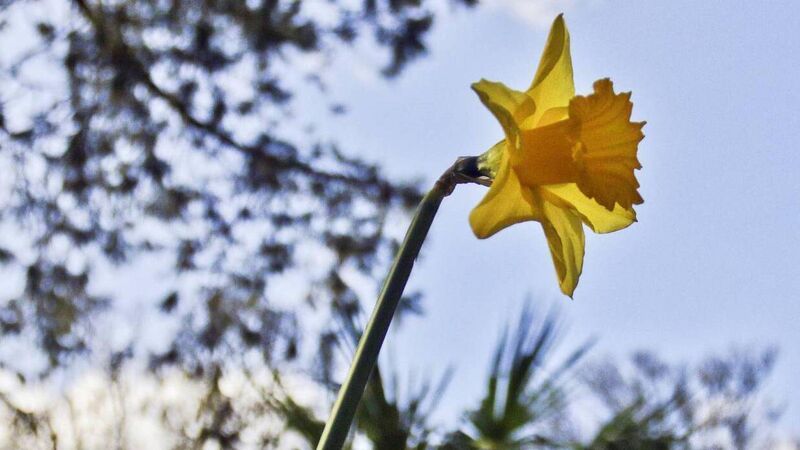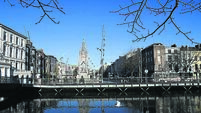A million of us speaking fluent Irish by 2040? We can do it...

Some PR person somewhere was weeping with gratitude as the clip of him digging deep into the recesses of his brain for his Irish vocabulary and grammar went viral on social media, giving the Irish language the global exposure and cool credentials that marketing money can’t buy.
Brendan Gleeson was equal líofa (fluent) in his TG4 red carpet interview, and along with the Oscar nominated An Cailín Ciúin/The Quiet Girl amassing exuberant reviews from U.S critics, you have have to wonder if this is the moment for a real and meaningful Irish language revival?
Irish people travelling abroad deploy mangled, mostly forgotten school Gaeilge to allow them to talk about their fellow bus passengers or dining companions, and at the last census almost 1.8 million people reported being able to speak Irish - that’s 40% of the population - however just 74,000 people speak Irish daily, less than 2% of the population.
A Conradh na Gaeilge survey found just over 28% of people aged 16+ “have confidence in my spoken Irish ability”.
That 40% of people report being able to speak Irish is a sign of hope. These are people who have the language somewhere in them, and with the proper encouragement and opportunity, could begin to use it with confidence, peppering it throughout their day.
I fit into this category. Irish wouldn’t have been my best subject at school but I learned plenty of it over the years. I try to use Irish in small aspects of my life. Saying “Slán” at the end of a phone call, or texting “go raibh maith agat” (or GRMA for someone who will get it) instead of thank-you.
I sometimes sign an email with a “Le meas, Kathriona” and we use some Irish expressions at home - “cuir do brógaí ort” (put your shoes on), “cá bhfuil do cóta?” (where is your coat), “dún/oscail an doras” (open/close the door), “an bhfuil tú réidh?” (are you ready).
My Junior Infant daughter is obsessed with her very first Irish sentence “an bhfuil cead agam dul go dtí on leithreas?” (am I allowed to go to the toilet?) and is soaking up new Irish words with joy.
Our usage of Gaeilge at home is slim offerings to the Irish language gods, but they hopefully show our children that Irish is worthwhile, welcome, and has a place in our home.
I speak smatterings of Irish not just to encourage our kids but because it taps into an aspect of us that I don’t want to let go of entirely. For some reason, saying “oiche mhaith” at the end of the day brings a different feeling to simply saying “goodnight”.
I am guilty of not prioritising it. If I decided that I wanted to be able to speak Irish with confidence, enrolling in an Irish language class for a year would probably restore much of what is buried in the unaccessed corners of mind.
The excuse “it was taught badly in school” doesn’t cut it anymore when you can learn Irish on the Duolingo language app, take part in Irish language classes online or in person, use resources like focloir.ie, listen to a wealth of podcasts and shows, and at the moment go to see a world class Irish language film in the cinema.
Speaking Irish is no longer tied up in political and economic power, it is about tapping into a part of our heritage and imagining a future where Irish is a part of daily life, distinguishing Ireland as a country resistant to colonisation and globalisation.
I’m producing a documentary at the moment that will be filming in New Zealand later in the year and I’m struck by how many Maori expressions are used in conversation. In New Zealand, significant efforts to revive the language only started in the 1980s, yet in 2019 the Kiwi government launched a language revitalisation strategy with a goal of one million people speaking te reo Maori by 2040.
They have arrived in numbers, taking over the side of roads, garden paths and grassy verges.
Trumpeting their defiance at the cold days of winter, swathes of daffodils are brightening grey skies with their conspicuous lurid yellow displays.
At The Lough, the annual daffodil display is looking particularly frothy and abundant, and as I go about the neighbourhood, glimpses of cheerful yellow in gardens brings a smile to my face.
Two new daffodils have emerged in an unlikely spot at the bottom of my garden. No doubt the kids snuck away some bulbs and shoved them into the soil in secret. A couple of months later! Surprise!
The ultimate tribute to the daffodil is, of course, from the poet William Wordsworth who so eloquently captured the joy of the daffodil with his 1804 poem I Wandered Lonely as a Cloud. I re-read it every year because it perfectly describes the positivity of the golden trumpet shaped flowers, quite literally heralding spring.







 App?
App?




